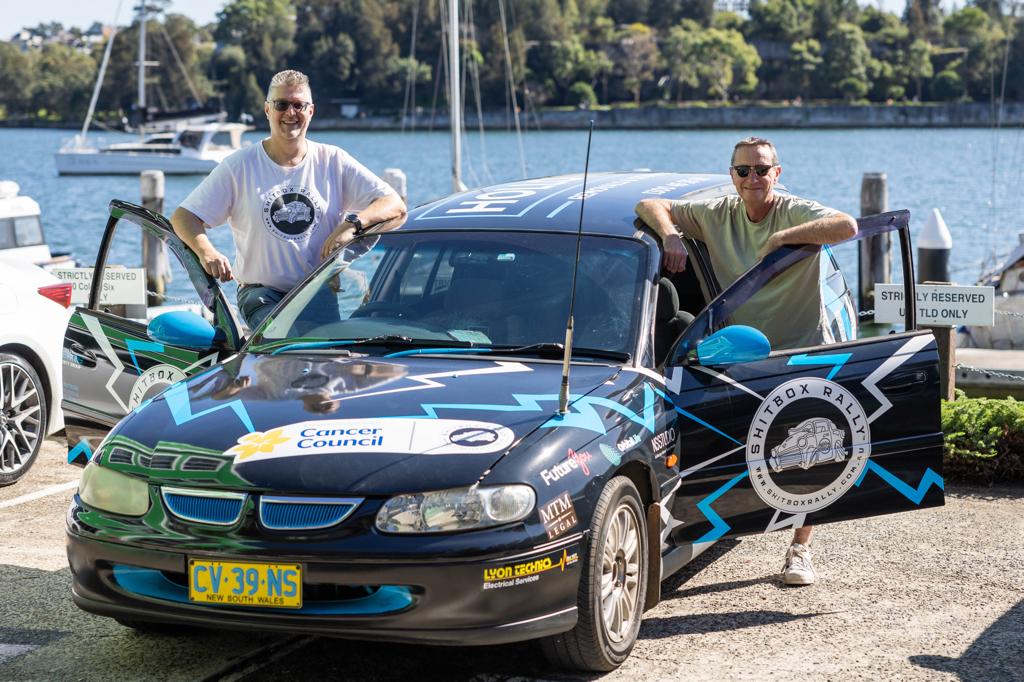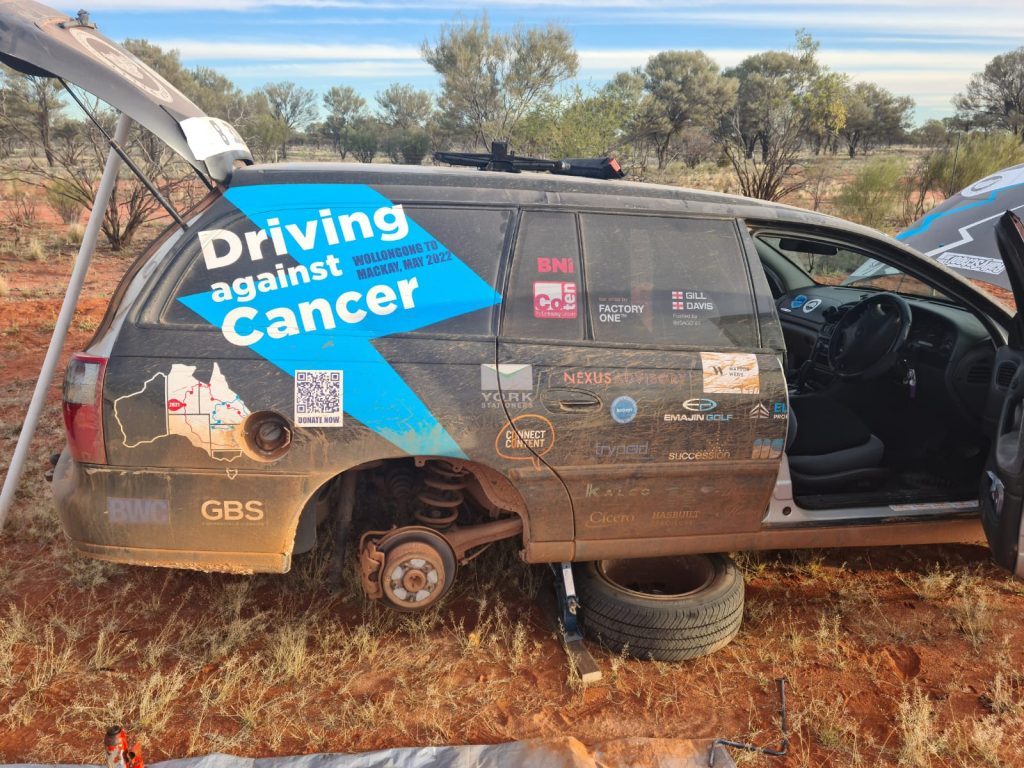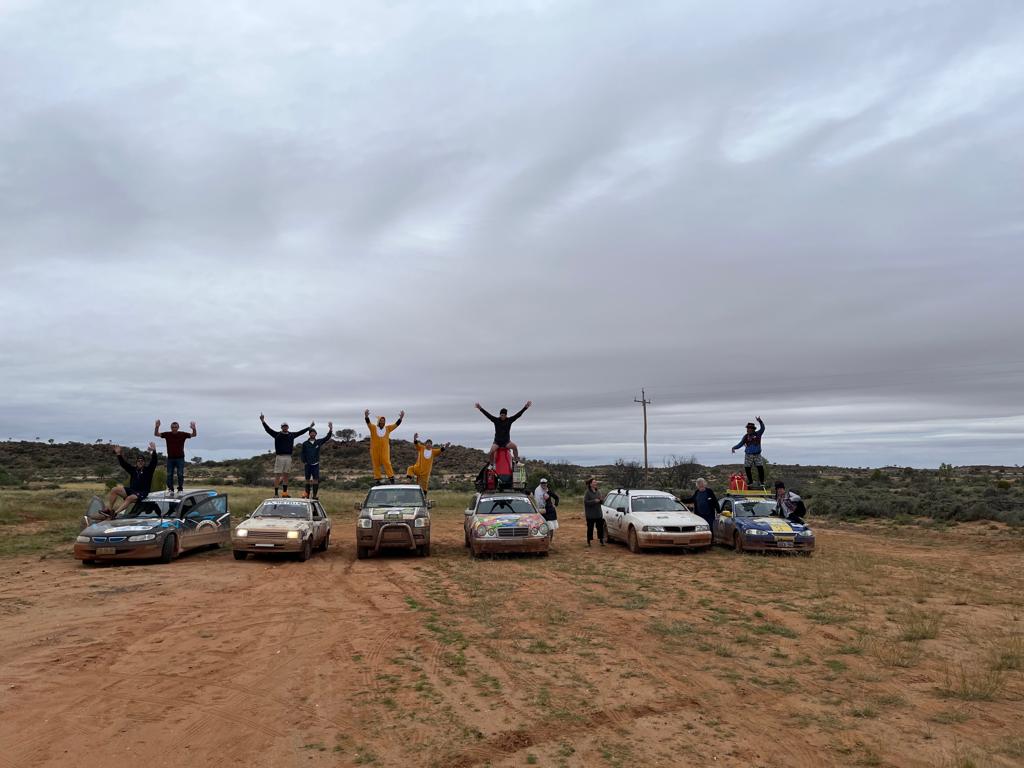As most of you will know, I recently completed the Shitbox Rally from Wollongong to Mackay. I heard about the rally quite a few years ago and had been thinking about doing it for a while. Things became a lot more serious when Jon Gill, who I share office space with, had a co-pilot drop out and was looking for a partner.

Everyone who does the rally raises money for The Cancer Council and last year Jon managed to raise an incredible $25,000. If I’m honest, my reason for doing the rally was not really about fundraising in the first place. It was more about loving the outback and thinking that the rally would be great fun.
This year our target was $30,000 and we came in at about $32,000. A huge thank you to everyone who donated to get us to this amount. Though it wasn’t my initial motivation, by the end of the rally I became really invested in the fundraising and also its potential impact. As a whole, the rally raised over $2 million for The Cancer Council and it has raised over $30 million since it started.
It’s been amazing seeing the specific projects that are being funded by these efforts and by the end of the rally I was quite humbled by how much the money was appreciated by The Cancer Council. It did really feel like we were making a difference. This might not have been the reason I started the journey, but now it’s definitely what I’m most proud of.
What the Shitbox rally is actually like?
The car that we were in was a 1999 Holden Commodore wagon that was purchased for $400 three years ago.This would be its second rally. We covered 5,500 kilometres in 10 days in this car. Almost all of this was on dirt roads so the car took a real beating and it wasn’t always easy.
The first night we were in Trundle, NSW and it was so cold that I wasn’t prepared for it. I’ve done quite a lot of camping with the kids and think I’m reasonably experienced, but I didn’t realise how cold it was going to get. It got down to about minus 3 degrees and we had ice on the inside of our tent.
On day 2 we had a really long day and drove about 600 kilometres on some really rough dirt. Some of the potholes were so big that it would jar the entire car when we hit them. There would be a massive bang and it would feel like the car had just gone over a small brick wall.
I was driving and at one point the car started making a funny noise. You travel in buddy groups of about six or seven cars with each car spaced out about 300 yards. That day we were towards the back of our buddy group, but had one car behind us with guys that are mechanically very strong.
We radioed the car behind and asked them to have a look. They pulled up, had a look and then said, ‘Your suspension is broken.’ We pulled off the road and all of our buddies who were ahead had to turn around and come back to where we were. These two guys jacked up the back of the car, took the tyre off and saw the suspension was completely snapped. They managed to get a replacement bolt off the roof rack of one of the other cars. The bolt was long enough but too thin. So they put gaffer tape around it and then replaced the bolt, put the tyre back on and dropped the car down.

One hour later we were having a champagne sunset.
The rally actually had to change the course a few times because of the floods as roads were impassable. So we’d pitch up at these towns that didn’t know we were coming until 24 hours before. They’d put on food, drink, entertainment and so on for 600 people in the local showgrounds. It was no small feat.
When we were talking to some of the locals they explained they were used to the emergency relief because they’d been forced to adapt during the recent floods. That was a bit of a shock for us soft centred Sydneysiders.
Jon and I decided to really push the limit and drive home from Mackay as well. When we came back down through Queensland there were floods and at one point we were traveling through what could best be described as a lake. It wasn’t dangerous because there was no current, but the water was about knee deep.
The car started getting slower and slower, coughing and spluttering and we were looking at each other thinking that this wasn’t good. Then the car completely cut out and just stopped dead in the middle of the water.
As we were on the way back, we weren’t with our buddy group anymore. We waited a few minutes then turned the engine over again and fortunately it started so we managed to get out. It was just luck.
A lesson in resilience and adaptability
As I spoke about in my last article a few months ago, adaptability is becoming increasingly important in the working world. On the Shitbox Rally things are supposed to go wrong, that’s the point, but it’s the challenge of overcoming things when they go wrong that’s the fun. You have no idea what’s going to happen next.
In business it might not be that fun constantly trying to overcome difficult and challenging obstacles, but it’s a necessary skill at the moment. Covid has shown that you need people that are adaptable so that when stuff doesn’t go to plan they can handle it.
More recently the war in Ukraine has provided significant challenges. I spoke to a CEO yesterday who had 130 software engineers in Belarus and Ukraine when the war broke out. They were six days away from selling their company to a US conglomerate and had to relocate all these people to India. No one really saw that coming, but if you’ve got 130 people in a war zone you’ve got to do something about it.
So the trip was a reminder to me that adaptability and resilience really are key to success, as is having a strong support network. And if you’re thinking about doing the Shitbox Rally, the last few years of navigating constant change while not knowing what the right way forward is, might have prepared you well.
Thanks again to all those that donated! I’m hopeful I’ll be back behind the wheel on another Shitbox Rally adventure before too long.

